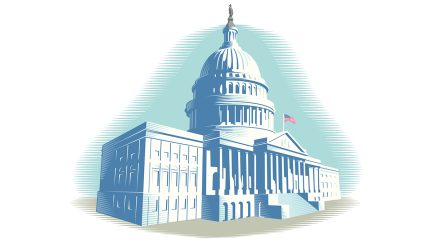Want the latest retirement plan adviser news and insights? Sign up for PLANADVISER newsletters.
IRS Publishes Revised Form 8881
The one-page form marks the symbolic start of SECURE 2.0’s enhanced tax credits for small business retirement plan startups.
Last week, the IRS issued a revised form for small businesses to apply for an enhanced tax credit for starting an employee retirement plan, effective from 2023 onward. The simple, Form 8881 marks a symbolic step for a key part of the sweeping SECURE 2.0 Act of 2022 passed at the end of last year.
That policy increased the three-year startup tax credit for employers with up to 50 employees to 100% of administrative costs, with an annual maximum of $5,000, up from the 50% available since 2019 as part of the Setting Every Community Up for Retirement Enhancement Act. SECURE 2.0 also provides a tax incentive of up to 50% of plan startup costs for employers with from 51 through 100 employees.
In the 4,000-page omnibus appropriations bill that included the legislation, the overall goal of the provisions was in the heading: “TITLE I—EXPANDING COVERAGE AND INCREASING RETIREMENT SAVINGS.”
But providing tax credits alone will not guarantee implementation by small businesses, according to Kevin Gaston, director of plan design for digital recordkeeper Vestwell, which has been active in working with states on workplace startup plan offerings.
“The savings industry has a responsibility to support employers in putting these tax credit opportunities into action,” Gaston says.
He notes that recordkeepers administering the plans can play a key role in providing the data for small businesses to get the tax credits.
“While [Form 8881] is only one page, recordkeepers have essential data such as who was eligible and who received which contributions during a given time period,” Gaston says. “By leveraging advanced technology and industry expertise, we are able to significantly reduce the time needed for business owners to complete these forms. This allows them to remain focused on running their businesses.”
Covered costs from the credit include those paid by the employer to set up and administer the plan, such as an adviser or third-party administrator, as well as recordkeeping fees and employee education expenses. The credit does not apply to plan costs paid through plan assets.
Kristen Davis, an ERISA counsel at startup 401(k) provider Human Interest, notes that while the enhanced incentives were official at the start of 2023, the release of the actual form at the end of this year is common practice for policy initiatives.
“It tends to work this way that changes occur and are effective, and forms may be updated after the fact,” she says. “Plans could begin to take advantage of the updated tax credit in 2023.”
In a recent survey of retirement industry experts, the Transamerica Corp. found them to be bullish on an increase in small business employees having access to a defined contribution plan in coming years.
Among the panel of 48 experts, 82% strongly agreed or agreed that they expect the percentage of private sector employees at companies with fewer than 100 employees with access to a DC plan will grow to 60% by 2026, up from 51% in March 2020, according to data the report cited from the Bureau of Labor Statistics.
The true impact, however, will come from an industry-wide effort, according to Vestwell’s Gaston.
“We have an opportunity as recordkeepers to help close the savings gap by ensuring businesses have access to all the credits to which they’re entitled,” he says.
You Might Also Like:

403(b) Plans Have Special Considerations When Complying with SECURE 2.0

Answering Questions About SECURE 2.0 Catch-Up Provisions

